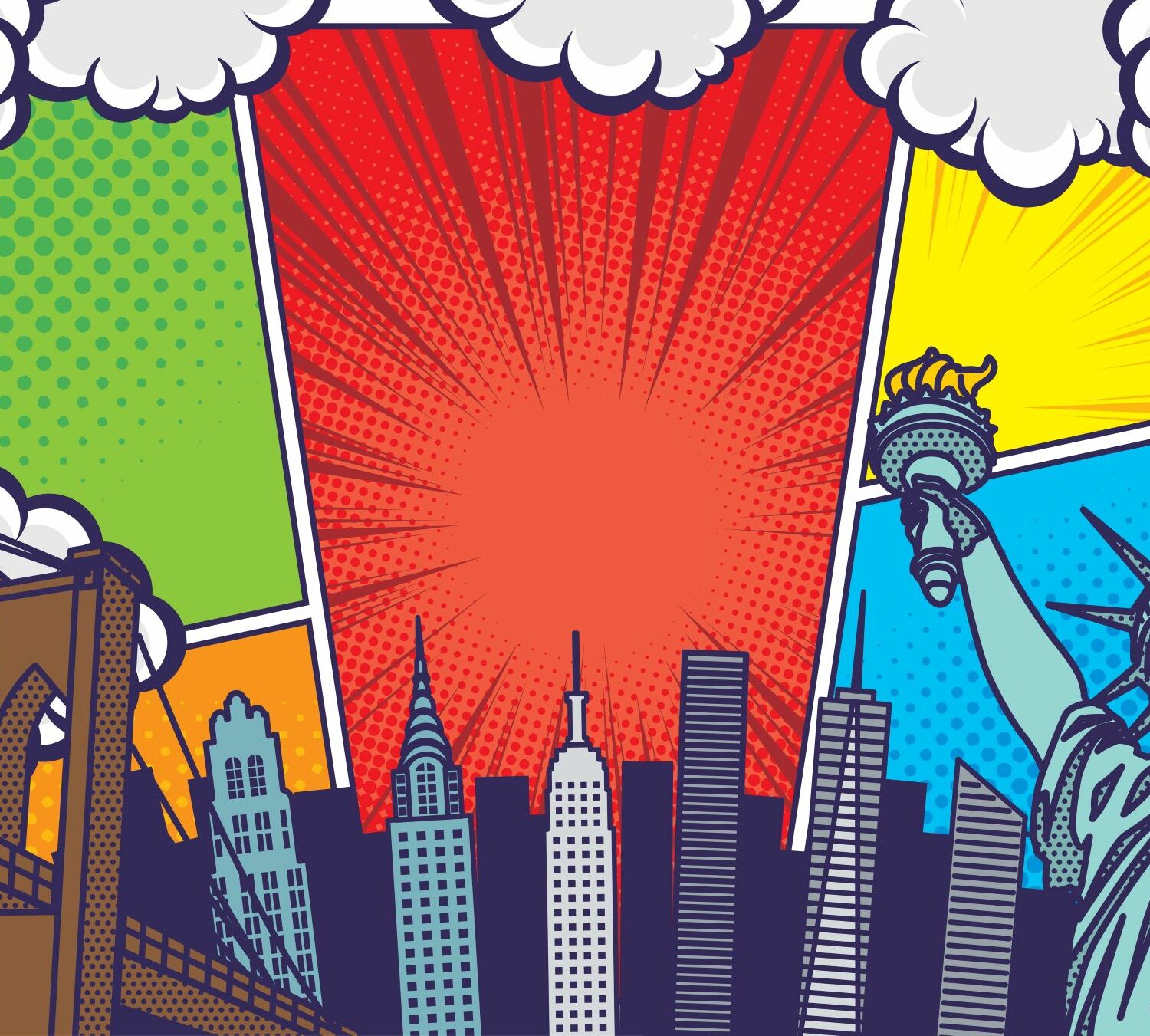New York City has always been a fertile ground for art, a place where artistic ideas and expressions have found room to grow and flourish. It is not just a metropolis; it is a living symbol of creativity. Since the 1940s, the city has become a hub for revolutionary art movements such as Abstract Expressionism and Pop Art, thus redefining the boundaries of modern art. However, the city’s evolution and economic changes have had a significant impact on the art scene, transforming it in profound and sometimes unexpected ways.
– Questo articolo fa parte del terzo numero cartaceo de IlNewyorkese: ACQUISTALO QUI
Un’epoca d’oro e l’ascesa dei quartieri artistici
The connection between New York and art is complex and rooted in time. Before the 1940s, Paris was considered the art capital of the world, but with the migration of European artists to the United States during World War II, New York became the new epicenter of creativity.
As early as the 1960s, with the rise of Pop Art, New York’s art scene thrived on large and affordable spaces where artists could experiment freely. Neighborhoods such as Greenwich Village, the Lower East Side, and Soho were known for their affordable rents, which attracted artists, musicians, and creatives from all corners of the world. These neighborhoods became hotbeds of innovative ideas, where groundbreaking artistic movements were born and developed.
A significant example is the art movement that flourished in the Lower East Side in the 1970s and 1980s. This neighborhood, once blighted and inhabited by marginalized communities, became a breeding ground for street art and graffiti, seen as acts of rebellion and self-expression. Artists such as Jean-Michel Basquiat and Keith Haring found these streets a canvas on which to paint their visions of the world. New York’s underground scene grew into a global art movement that still profoundly influences popular culture today.
Abandoned factories and lofts converted into studios became the epitome of unbridled creativity, a stimulating and accessible environment that allowed many artists to emerge and profoundly influence popular culture.
L’impatto della gentrificazione e le nuove sfide per gli artisti
With the advent of gentrification and soaring housing costs in recent decades, many of these iconic neighborhoods have become unaffordable for young artists. New York’s transformation into one of the most expensive cities in the world has led to a migration of artists to outlying areas, other cities, and a reorganization of creative spaces. Neighborhoods like Soho, once the beating heart of the art scene, are now populated by upscale boutiques and commercial galleries, with less room for experimentation and artistic growth.
Despite these challenges, the history of art in New York is one of continuous reinvention. A new current is emerging, fueled by artists challenging conventions and finding innovative ways to express themselves. This new movement is often characterized by the use of digital technologies and the hybridization of different media. Contemporary artists are exploring the intersection of art, science, and technology, creating works that challenge traditional notions of form and content.
L’ascesa dell’arte post-digitale
The “post-digital art” movement is gaining ground in New York, reflecting a critical response to the pervasiveness of digital technology in everyday life. Post-digital artists not only use digital tools to create their works, but also explore the social, cultural and philosophical implications of living in a world increasingly mediated by technology.
Post-digital works can include interactive installations, augmented reality, video projections and even data manipulation as an artistic medium. Artists such as Trevor Paglen and Ian Cheng have pioneered this movement, using advanced technologies to explore themes such as surveillance, artificial intelligence and the future of humanity. New York’s post-digital scene stands out for its ability to fuse aesthetics and social critique, offering new perspectives on how art can interact with the contemporary world.
Un ritorno alle origini e una rinascita artistica
Alongside new trends and the new post-digital way of expressing oneself, New York is witnessing a return to its roots, with a new generation of artists seeking to revitalize ties with the past while remaining open to innovation. The New York art scene, which had suffered a downturn due to high costs, is flourishing again. This renewed artistic fervor is visible in areas such as Bushwick and Ridgewood, where independent spaces and art collectives are emerging, offering artists new ground for experimentation and growth.
This renaissance is characterized by a return to craftsmanship and manual skills, with a greater emphasis on creating works that combine tradition and innovation. Today’s young artists are inspired by past styles and movements, but reinterpret them in a contemporary way, creating a bridge between eras. It is a movement that evokes the creative energy of past decades, but with a modern awareness, reflecting the challenges and opportunities of our time.
Conclusione
Despite the transformations that have shaped New York’s art scene, the city continues to be a place where art can thrive, even in difficult times. The resilience and adaptability of New York artists prove that, with the right positioning and an innovative approach, it is possible not only to create art but also to leave a lasting mark. New York remains a beacon for global creativity, a place where the past and the future meet, offering endless opportunities for those willing to explore new horizons.
The article New York: a changing artistic crossroads comes from TheNewyorker.

